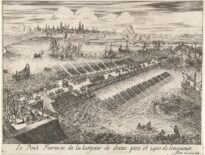Queen Elizabeth I's reign has gone down in history as the Golden Age, and the queen as Gloriana and Good Queen Bess, and her reign was certainly a time of exploration, cultural flourishing, and military victories. But was it truly "golden" for everyone.
No, it had a darker side.
This is what I explore in this video...
Transcript:
Elizabeth I's reign is often celebrated as a Golden Age—a time of exploration, cultural flourishing, and military victories. But was it truly golden for everyone?
Behind the glorious image of Gloriana, there was persecution, war, economic hardship, and brutal repression. Today, let’s uncover the darker side of Elizabeth I’s rule—the suffering, censorship, and struggles that are often left out of history books.
Elizabeth is sometimes praised for her religious compromise, but the reality was far more brutal.
Catholics were hunted down, executed, or forced into hiding. And radical Protestants—Puritans—were also persecuted. The 1593 Act Against Seditious Sectaries led to the executions of Henry Barrow and John Greenwood, Puritan leaders who refused to conform. Even mild dissent from the Church of England was not tolerated.
The suppression of Puritans and Separatists would eventually fuel future religious dissent and the migration of English Pilgrims to America.
Then, while Elizabeth’s court was lavish, the majority of her subjects lived in poverty and instability. Inflation soared, caused by coin debasement, population growth, and food shortages.
The Enclosure Movement forced peasants off common land, leading to homelessness and rising vagrancy.
The 1590s were a disaster—a series of failed harvests caused widespread famine, malnutrition, and disease.
For many, life under Elizabeth wasn’t an era of prosperity, but a constant fight for survival.
Instead of helping the poor, Elizabethan laws often punished them brutally. The 1597 Act for the Punishment of Rogues led to whipping, branding, and forced military conscription for the homeless. The Poor Laws of 1598 and 1601 aimed to provide some relief but also criminalised vagrancy. Many people forced into begging due to famine or land loss were treated as criminals rather than victims.
Of course, Elizabeth is often credited with defeating the Spanish Armada, but England was locked in costly, devastating wars for most of her reign. The Nine Years’ War in Ireland (1594–1603) was one of the bloodiest conflicts in English history, with scorched-earth tactics, massacres, and brutal suppression of Irish resistance. The Anglo-Spanish War (1585–1604) drained England’s treasury, forced thousands of soldiers into battle, and left many veterans abandoned in poverty. English troops sent to fight in the Netherlands and France suffered from disease, starvation, and horrific battlefield conditions. For soldiers and civilians, Elizabeth’s wars brought more suffering than glory.
And while Elizabeth has gone down for her golden age of theatre and literature, her reign was also known for its censorship. Elizabeth’s government tightly controlled what people could read, write, and say. The Stationers’ Company Licensing System meant that all books required approval before publication. The Master of the Revels censored plays—anything too political, critical of the monarchy, or religiously controversial was banned.
Catholic books were outlawed, and even some Protestant Bibles were edited to align with Elizabeth’s religious policies. This really wasn’t an era of free thought—it was a time of strict censorship and government control over ideas.
Elizabeth I was an exceptional woman, but her reign did not improve life for most women. Witchcraft accusations surged, particularly after the 1563 Witchcraft Act, with women disproportionately targeted. Education for women remained rare—only aristocratic women had access to learning, and even they were expected to prioritize marriage and obedience. Patriarchal restrictions grew stronger rather than weaker during her reign. Despite having a female ruler, Elizabeth’s England was far from progressive when it came to women’s rights.
And there there was corruption in her government. Many of Elizabeth’s favourites and councillors used their power for personal financial gain. And by the 1590s, her court was deeply divided, especially between Robert Cecil and the Earl of Essex. Corruption was rampant, and the Crown’s finances were often in crisis due to extravagant spending and costly wars.
Far from being a well-oiled government, Elizabeth’s administration struggled with instability and factionalism.
By the late 1590s, the Golden Age had lost its shine.
- Food riots and crime increased as the economy crumbled.
- The Essex Rebellion (1601) revealed deep dissatisfaction among the nobility.
- Many of Elizabeth’s subjects were war-weary, overtaxed, and struggling to survive.
And by the time she died in 1603, Elizabeth’s once-glorious reign was tarnished by unrest, economic distress, and political instability.
Elizabeth I is often remembered as one of England’s greatest monarchs—but history is rarely that simple. Yes, there were cultural and military achievements, and she was an amazing queen, but her reign was also marked by oppression, hardship, and war. For many of her subjects, life was not golden—it was a struggle for survival.
What do you think?
Did Elizabeth I’s reign deserve its Golden Age reputation, or have the struggles of ordinary people been glossed over by history?


Excellent video, Claire! It allows some reality to enter into the discussion of the Elizabethan Age. While there were many good things; as you pointed out, there were many bad things as well. It’s sad that the status of women did not improve, despite the fact that there was a female ruler.
I can’t help but wonder if Elizabeth had married and produced an heir, would the political instability and corruption at court have been lessened?